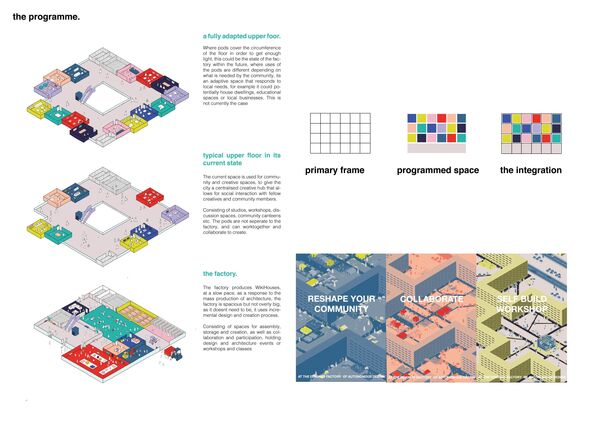Situated in Le Corbusier’s unrealised Radiant City, The Feminist Factory of Autonomous Design houses The Autonomous Collective (T.A.C), an alternative architecture practice who use highly collaborative and participatory methods of design, working directly with communities to create WikiHouse social architectures to be distributed throughout the city, or used within the space itself. The factory acts as a central creative community hub, with a ground floor production space, and a series of more dynamic and adaptive upper floors, which consist of pods of various programmes, including studios, community canteens and discussion space. The point is, the factory can be anything the community needs it to be, it is an incremental design process and can facilitate the addition of new pods overtime. The exposed structure and undeveloped space inside the factory creates a visual representation of this narrative that can be understood by the user.
The concept is a response to the mass production of inaccessible and unaffordable architectures, as well as the dystopian Radiant city which acts as a ‘machine for living in’. It’s an attempt to close the gap between communities and the architecture industry, by making it more accessible, allowing individuals to have a say in how their cities are shaped. Producing spaces that transform areas, improving factors like walkability, safety and accessibility, subverting the effects of a hierarchical, oppressive class system.
The use of WikiHouse, a flatpack construction system, was chosen to promote self-build culture, pushing forward this idea of a democratised design system. Allowing for easy, collaborative and minimally invasive construction. Modular parts can be disassembled and reused in future projects, creating a circular economy, based on slow, meaningful construction, as opposed to capitalistic mass production. An architecture practice who prioritises people over profit.


